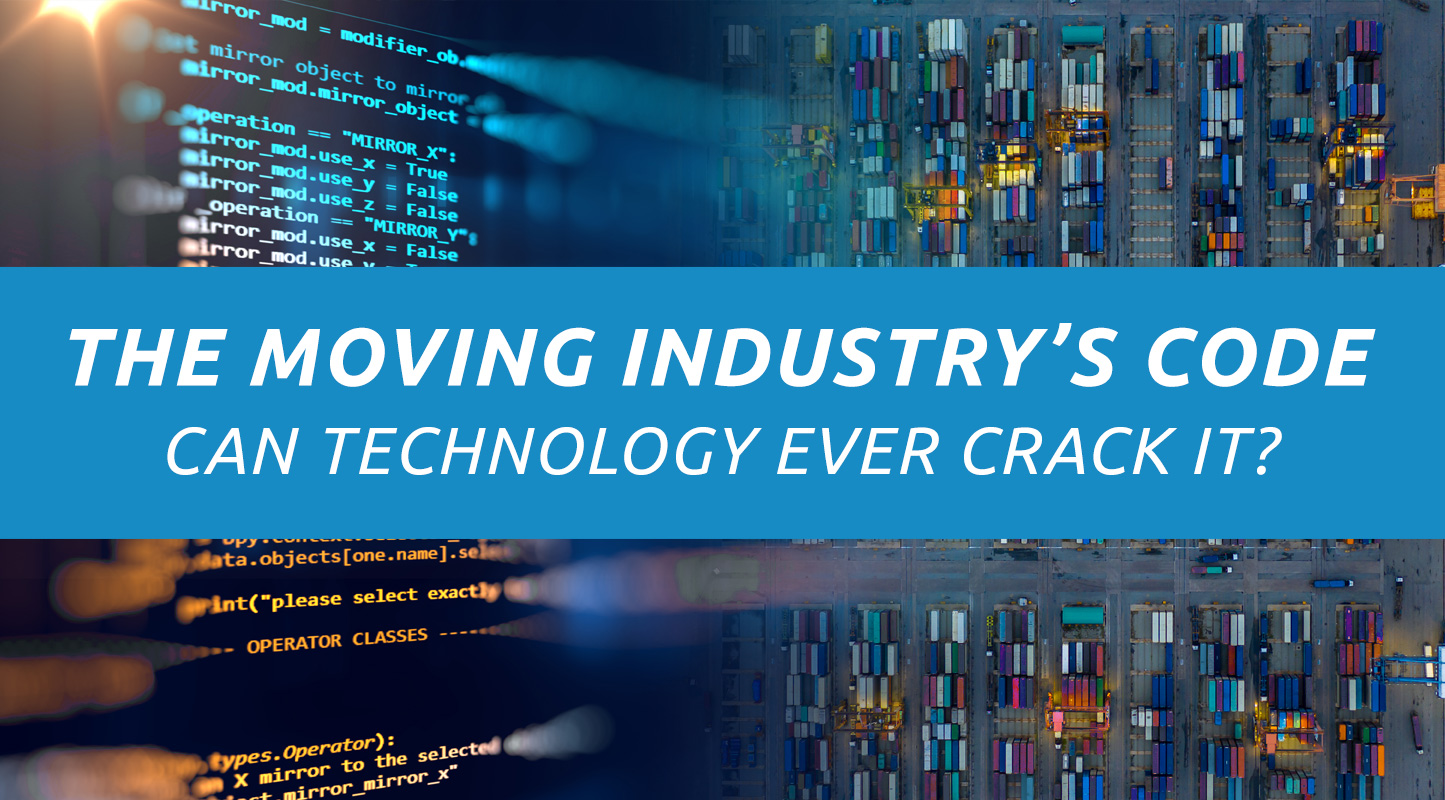May 24, 2021 The Moving Industry’s Code: Can Technology Ever Crack it?
The moving industry has spent the better part of 100 years building its own very specific way of doing things. It’s a culture, a code, something that runs deep–and it’s apparent to anyone who’s spent more than five minutes in the company of an experienced mover. While tech advancements are happening all around our industry—in the supply chain, logistics, transportation, and elsewhere—moving services remains a high-touch, people first industry. We know that relationships matter. Software can’t replace know-how, and no API can get a piano out of a two-story loft.
So, what role can technology really play in moving services, and what will it take to convince movers to adopt it? I spent the first 30 years of my career with moving companies, so I suppose I should qualify as a healthy skeptic when it comes to technology. From what I’ve seen at PricePoint, the technology is only as good as the people behind it. It takes industry know-how to build good software. And it still takes strong relationships to understand how to apply any tech solution to truly support the customer.
Most tech startups begin with a great idea, and then do a whole lot of market analysis to back it up. At PricePoint, it went the other way around. The idea to build a mover-centric pricing platform from our shared insider experience was the starting point. We felt the pain of operations and pricing professionals who work with spreadsheets, supplementals, quotes and requotes every single day.
PricePoint is a success story in the moving technology space because it was built for movers, by movers. The team is made up of people with decades spent in moving operations and pricing, and are your colleagues. This is a key point of differentiation for me: we continue to connect with our personal networks to bring industry veterans to the table to share and strategize solutions to your complex challenges.
— Conway’s Law
There is an adage called Conway’s Law, coined by computer programmer Melvin Conway in 1967. It states that “any organization that designs a system (defined broadly) will produce a design whose structure is a copy of the organization’s communication structure.” In other words, in order to relate to movers, a tech solution needs to speak “mover” and all that entails. The software designer should try to emulate their end users throughout the development process. While this observation was made more than 50 years ago, it still applies today: good technology cannot be built without strong relationships and communication.
COVID-19 proved to be an accelerator of technology across nearly every industry. It’s possible that some tech solutions that were adopted by movers to get the job done safely during COVID were inevitable, but it’s going to take a sustained push to make real change in the moving industry. If we want to get to the point where technology makes our daily lives easier and more efficient, technology architects will need to work even more closely with end users. We should work on building relationships with our partners first, and put in as much effort as movers put into building relationships with their clients.
One of my favorite positions in my career thus far has been in partner relations. I truly feel as though I’m in a partner network of friends worldwide. I don’t want these relationships to feel transactional because part of our interaction has been replaced by technology. I want the technology to help us work more closely together, to understand our customers better—and ultimately free up time and energy for building better partnerships and global friendships, and better solutions for customers.
To achieve this goal will be to crack the code. This is the large task that lies ahead for technology in the moving services industry.
Article originally published in IAM Portal Magazine, May/June 2021.
Mindy is that rare breed of professional who, even after 30 years in the household goods and mobility industry, continues to be inspired by helping clients and partners find a better way to work together. Always smiling and with something positive to say, Mindy is a born relationship-builder, dot-connector, and solution-finder.

